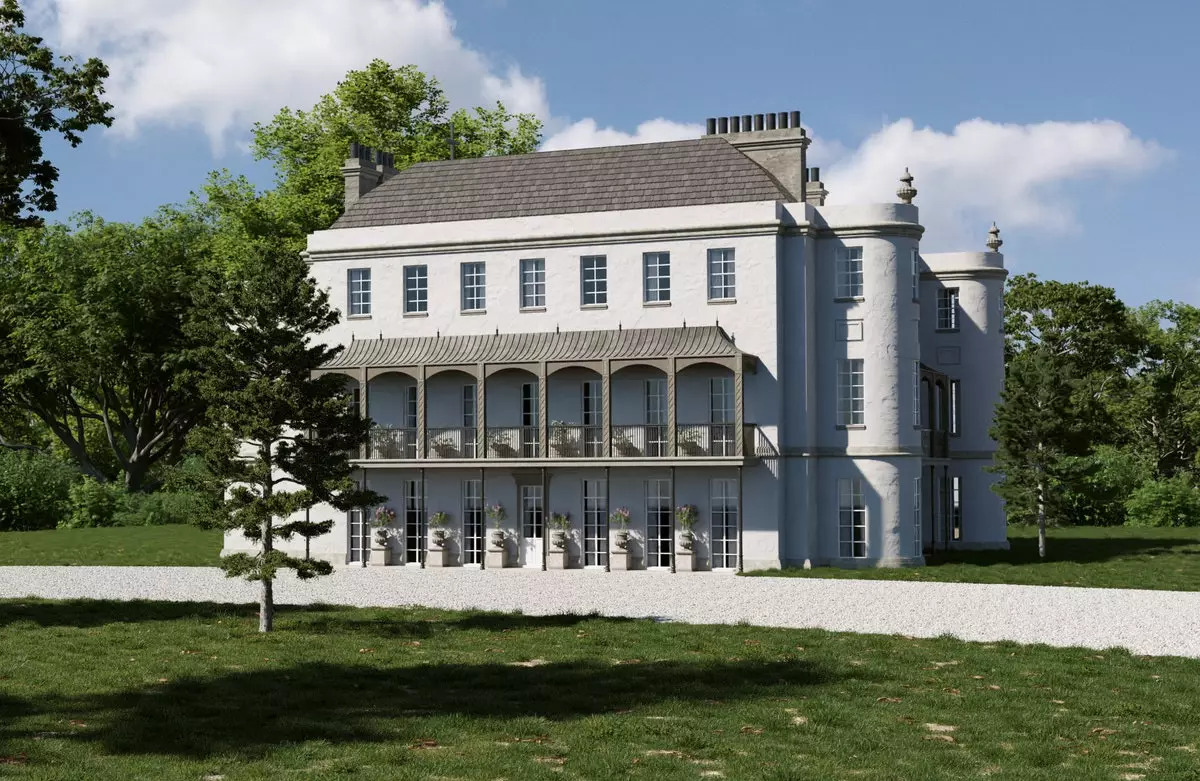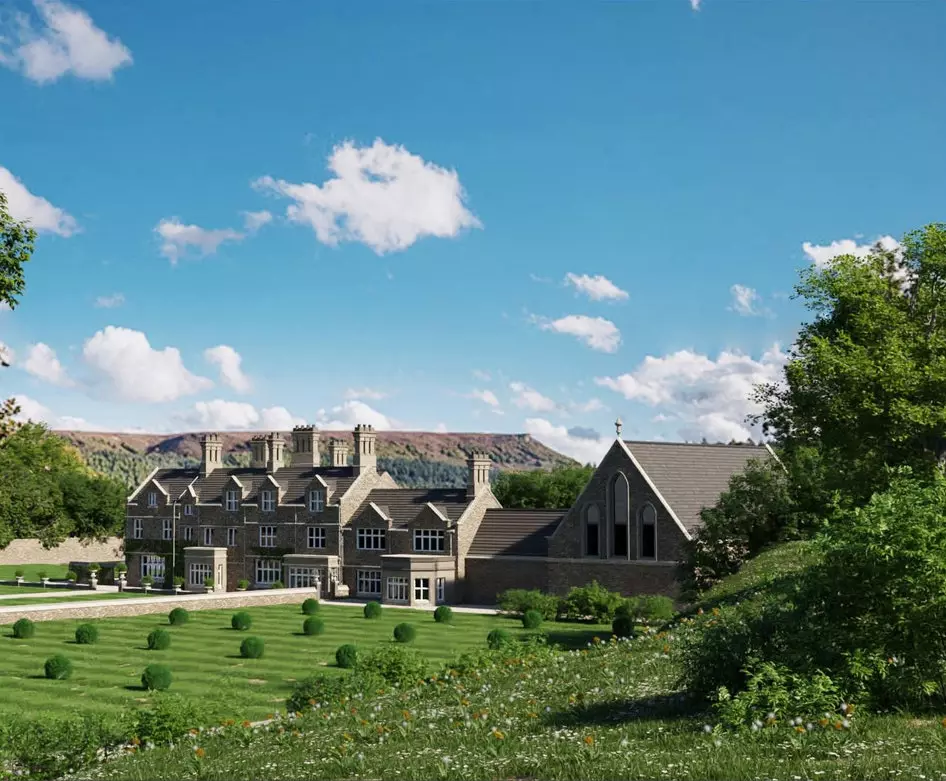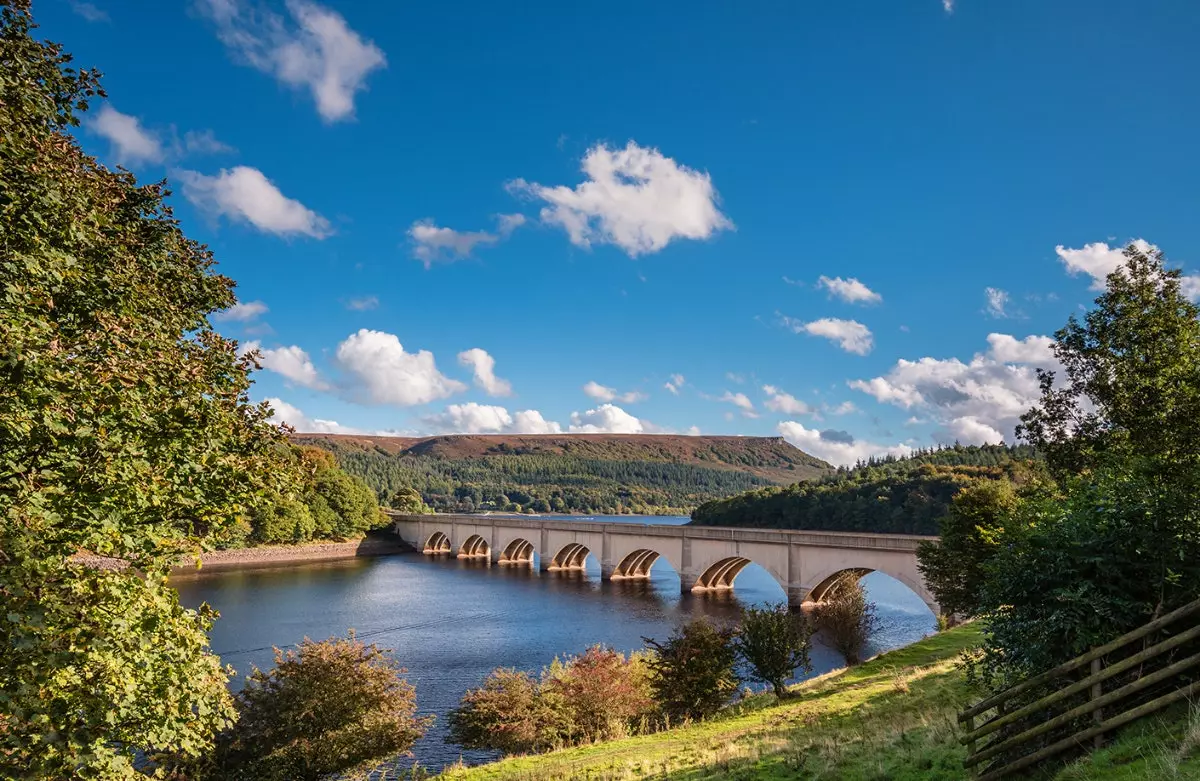
What the University of Reading campus now embodies would look like this before it was rebuilt.
How many times have we wondered what would our homes be like years ago? Common spaces such as parks, roads or squares have previously hosted extensive lawns, businesses or even castles. Formerly in England , there was a lifestyle deeply rooted in the large mansions in the middle of nature . The passage of time condemned them to your demise and instead we now see bridges, streets or even car parks. Now it is possible see what they would look like if they still existed.
The HouseholdQuotes.co.uk team has teamed up with architect and digital designer Juan Carlos Saldivar. It has been this meeting that he has allowed digitally rebuild some of the country houses prettiest in the country. And, although it is sad to see how they were destroyed and replaced, thanks to this work we can imagine what life would be like then.

This is what Derwent Hall would look like originally.
HISTORICAL JUDGMENT
In the last 200 years, England has left behind approximately 2,000 country houses . At its peak, it had 5,000 mansions, most of them surrounded by vast agricultural estates . With the transformation of the economy in the mid-19th century, taxes became equitable and owners could not support themselves solely by renting their land to farmers.
In this way, upper-class families, normally inhabitants of these stately homes, began to have difficulties in maintaining their homes. To this he joined the progressive abandonment of country life, urban development and the ravages of war . Finally, the 20th century was the tomb of these mansions that contained so much history in their walls.
In the 1950s alone, more than 400 houses were demolished and replaced . That is why, those still existing, are preserved as historical witnesses and part of the heritage of the place. However, although many of them make up stable homes, others begin to follow in the unfortunate footsteps of the rest.

This is what Derwent Hall looks like today.
SOMETHING MORE THAN A HOME
The platform and the architect they have chosen seven mansions from different places to recover them and they have portrayed next to them what constructions currently occupy their place. Some enjoyed great importance, such as Eridge Castle in Sussex . Its dimensions were such that, even Queen Elizabeth I stayed there for 6 days in 1573 . Its misfortune came with its demolition in 1937 after having been one of the usual places of the Prince of Wales, now converted into a modern house.
For others, their fate has been even less attractive. Hooten Hall in Cheshire became popular due to the racecourse that he owned When the war started and the military took over the place, it became a landing strip. And, finally, the space that so many visitors had seen pass by, ended up transformed in 1957 into a car plant.
However, others like Addington Manor, have not only enjoyed a multitude of identities , but its redesign still has a certain charm. Located in Buckinghamshire, it was used as a school in the First World War, later becoming a hotel. Its demolition in 1926 gave it a new life in the form of a smaller neoclassical house, but next to an Equestrian Center.
Some have not continued their existence as buildings, but their functions have completely changed as Derwent Hall , in Derbyshire. Country house, youth hostel and school, but now, it embodies the Ladybower Reservoir in which the surroundings of the house can be glimpsed in times of drought.
and others like Foot's Cray Place, in Kent , which, after frenetic activity as a naval establishment, house or museum, has ended up being a public park.
The stories that ran through the bricks of these stately houses have been, to say the least, curious. Whiteknights Park, in Berkshire, current campus of the University of Reading , was the mansion of Earley St. Nicholas. Equipped with a wine cellar, a library and dreamlike gardens, it also passed through the hands of the fifth Duke of Marlborough, who he was known for his wild parties . What those walls will have seen is priceless.
But there are also those whose stories can become chilling. This is the case of Cassiobury House, in Hertfordshire . The Capel family lived there until the 20th century. Arthur Capel was beheaded in 1649 and, although the house passed through many owners, the seventh earl who inhabited it was run over by a taxi in 1916.
Each of them could narrate infinite memories and ins and outs of daily life that they saw happen . Unfortunately, various circumstances have prevented us from enjoying that period of history and the charm they gave off. With this digital reconstruction, at least now we can fantasize about its existence . Change is overwhelming, it's never made so much sense before the popular expression “all this was countryside”.
